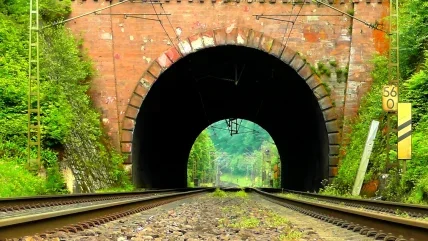
At WTC 2023, in Athens, tunnellers will have ample scope to learn from a packed programme of talks organised in multiple tracks to cover many themes of importance to the technical scope of the industry as well as matters of organisation, sustainability, risk and the environment.
There will be plenty of opportunity to exchange views and share experience, and to learn and discuss in more detail about the key trends and developing business opportunities from global society and governments coming to appreciate more the importance of underground space.
While looking to current and future needs and opportunities, delegates and exhibitors to the Word Tunnel Congress will also find in Athens a rich history of knowledge and philosophy, and of ancient tunnel projects. Athens is ever a point on the globe to explore ways to see the world more deeply and as such is an appropriate platform from where to examine the theme of the Conference – Expanding Underground.
WTC 2023 – CONFERENCE PROGRAMME
The Conference runs 15 – 17 May with follow-on Technical Tours.
Commencing with an Open Ceremony and ending with Closing Ceremony, the three days of packed activities will feature parallel tracks of Technical Sessions plus a number of meetings for the International Tunneling Association’s (ITA) Working Groups (WGs) and Activity Groups (AGs).
ITA will also hold General Assembly sessions on the day before the conference starts and on the last day, at the end of the proceedings.
After the Opening Ceremony, the WTC 2023 Conference starts on 15 May with the Muir Wood Lecture followed by the Keynote Lecture.
Muir Wood Lecture
The Muir Wood Lecture in this edition of WTC is to be given by Prof Marc Panet and will address the ‘Convergence-Confinement Method’.
This is the 12th Muir Wood Lecture and Prof Panet’s nomination was proposed by the French Tunnelling and Underground Space Association (AFTES). He is author of the book ‘Calculation of tunnels using the convergenceconfinement method’. Prof Panet previously worked at Laboratoire Central des Pontes et Chaussees, in Paris: SHP Group; SIMECSOL; FC International; and, since 2000 has worked as a consultant, and taught at Ecole des Mines and other institutions. Prof Panet has worked on major infrastructure projects involving geotechnical works, including for tunnels, such as Mont Blanc, Frejus, CERN, the Channel Tunnel, Loetschberg, and metros in Paris, Rennes, Caracas, Algiers and Athens.
Keynote Lecture
The Keynote Lecture is to be given by Prof Kyriazis Pitilakis on the subject of ‘Seismic design and risk assessment of tunnels and underground structures’.
Prof Pitilakis is vice president of the European Association of Earthquake Engineering (EAEE) and past Chair of the Geotechnical Earthquake Engineering and Associated Problems Technical Committee (TC203) of the International Society of Soil Mechanics and Geotechnical Engineering (ISSMGE). Currently, he is Professor Emeritus with Aristotle University, in Thessaloniki, Greece, and is a Visiting Professor to Tongji University, in Shanghai.
He is also founder and coordinator of EUROSEISTEST, which is a large scale experimental facility in Europe for earthquake engineering, soil dynamics and engineering seismology. Further, he is involved in the ongoing revision of Eurocode 8 (EC8), Parts 1 & 5, on seismic matters.
Technical Sessions
Following lunch, the Technical Sessions begin in a predominantly four-Track structure over the three days of the Conference and Exhibition (2 x afternoons on 15-16 May, and full day 17 May).
The current programme provides the information for planned sessions, as listed below – Chronologically and by Theme, respectively. There are 10 Themes, in total.
A Track is generally presented in one location, in which Themes change. The Conference is mostly run in four Tracks, happening in parallel, but has a 5th Track – Women in Tunnelling – though that only a single session (late morning, 17 May).
The Tracks and Themes are first arranged chronologically, in the box ‘Technical Sessions’, and then the Themes are listed individually, each with their timeslots grouped together for convenience of planning to follow them over the busy days of the Conference.






